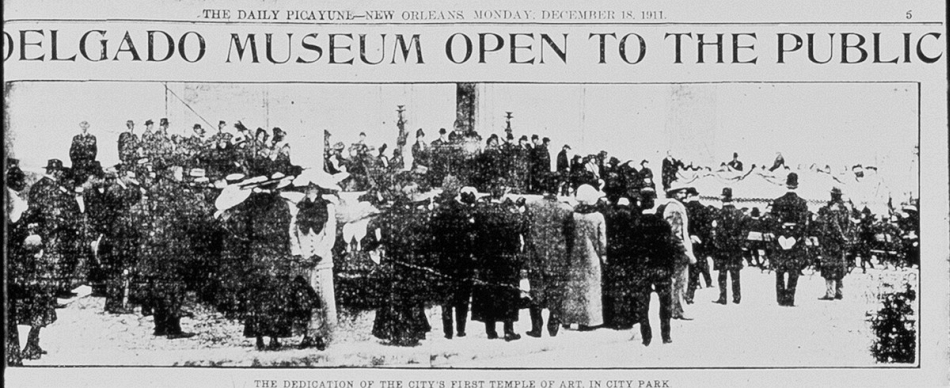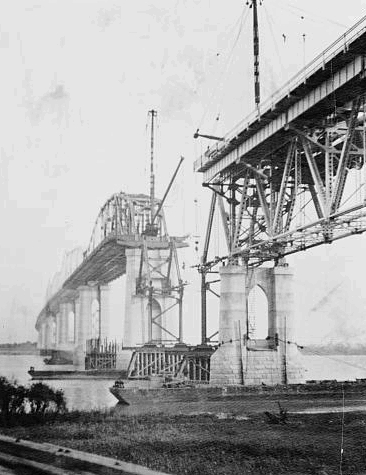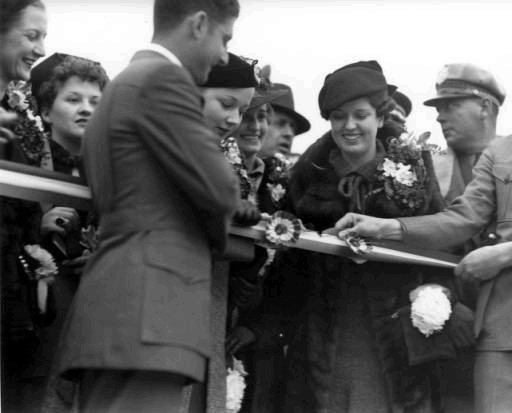|
Today in New Orleans History |
|
|
December 16


Delgado Art Museum Opens in City Park From NOMA: "New Orleans Museum of Art (NOMA), New Orleans’ oldest fine arts institution,
opened on December 16, 1911 with only 9 works of art. Today, the museum hosts an impressive permanent collection of almost 40,000 objects. The collection,
noted for its extraordinary strengths in French and American art, photography, glass, and African and Japanese works, continues to expand and grow, making NOMA one of the top art museums in the south. The
five-acre Sydney and Walda Besthoff Sculpture Garden at NOMA is one of the most important sculpture installations in the United States,
with over 60 sculptures situated on a beautifully landscaped site amongst meandering footpaths, reflecting lagoons, Spanish
moss-laden 200-year-old live oaks, mature pines, magnolias, camellias, and pedestrian bridges."
|
||
|
Charles Willard Moore, born on October 31, 1925, designed the exuberant, postmodern archetype Piazza d'Italia which
was dedicated in 1978. He was also an educator, writer, Fellow of the American Institute of Architects, and winner of
the AIA Gold Medal in 1991. Moore passed away on December 16, 1993. New Orleans born performer Dorothy "Dottie" Lamour (born Mary Leta Dorothy Slaton) came
home to celebrate her 50th birthday on December 10, 1967 while on a tour starring in "Hello, Dolly!"
which ran at the Municipal Auditorium on Saturday, December 16. Dottie died on September 22, 1996 in
North Hollywood at the age of 81.
Huey P. Long Bridge Opens Southern Pacific Railroad had proposed a bridge as far back as 1892 and in 1924 the Public Belt Railroad
had commissioned Modjeski to design a bridge which was rejected by the Department of Defense. In 1926 Modjeski drew
new plans which were approved. On December 30, 1932 the Public Belt, the city, the state, and the Reconstruction Finance
Company (RFC) signed the contract for construction of the new bridge. On opening day, 1000 people rode
the Southern Pacific train across the bridge and back. Thousands watched as Long's daughter, Rose, cut the ribbon to
allow cars to take their first ride across the $13,000,000 project. Many, without automobiles, walked over the river
and back. Bands played and a pageant was presented by school students. A banquet was held
in the evening at the Roosevelt Hotel. A.D. Danziger credited Long with making the new bridge a reality. Thomas
F. Cunningham, president pro tem of the Public Belt Commission also spoke -- he had been awarded the Times-Picayune Loving
Cup in 1932 for his 31 years of efforts to see that a bridge be built to what some people deemed "nowhere". Another Huey P. Long bridge, at US 190 (Airline Higheay) was built in Baton Rouge in 1940. Photos
from the Library of Congress. From the New Orleans Public Library: The first train to cross the Public
Belt Railroad's new Huey P. Long Bridge, December 16, 1935. The was one of the Southern Pacific's largest freight engines,
piloted by Stanley L. Barras and Thomas G. Hebert, veterans of the SP line. The opening of the bridge was celebrated with
elaborate ceremonies, including a historical transportation pageant that preceded the trains over the bridge: boy scouts
dressed as Native Americans, colonial horsemen and mounted guards, a pioneer stage coach, a primitive locomotive, a "horseless
carriage," and modern automobiles. Once the first train had crossed the span, an excursion train carrying nearly 1000
people left Union Station for a trip to Avondale and back. Regular train service on the bridge began on December 17, 1935
- and continues today. |
|
|
|

To receive an update for each day in New Orleans history,
join our facebook page - Today in New
Orleans History.
Analytics |
||



 Huey P. Long had been dead a mere three months when the bridge linking the New Orleans area to the west bank of the Mississippi
River was dedicated in his memory on December 16, 1935. It was the first to span the river in Louisiana, the 29th in the United
States, and the world's longest railroad bridge. Designed by Ralph Modjeski, it span of 135 feet rises 409 feet above
the high water mark and includes two 18-foot wide automobile roadways (a local radio personality was fond of calling it the
"Huey P. Narrow") with two 2.5 foot pedestrian walkways. As many as 1,000 workmen spent three years pouring
413,370 tons of concrete and handling 4,400 tons of granite and 60,000 tons of steel. Its main pier sits upon a man-made
island consisting of 131,500 cubic yards of sand within a caisson of steel. Railroad tracks run 4.4 miles to and from the
bridge.
Huey P. Long had been dead a mere three months when the bridge linking the New Orleans area to the west bank of the Mississippi
River was dedicated in his memory on December 16, 1935. It was the first to span the river in Louisiana, the 29th in the United
States, and the world's longest railroad bridge. Designed by Ralph Modjeski, it span of 135 feet rises 409 feet above
the high water mark and includes two 18-foot wide automobile roadways (a local radio personality was fond of calling it the
"Huey P. Narrow") with two 2.5 foot pedestrian walkways. As many as 1,000 workmen spent three years pouring
413,370 tons of concrete and handling 4,400 tons of granite and 60,000 tons of steel. Its main pier sits upon a man-made
island consisting of 131,500 cubic yards of sand within a caisson of steel. Railroad tracks run 4.4 miles to and from the
bridge. 





